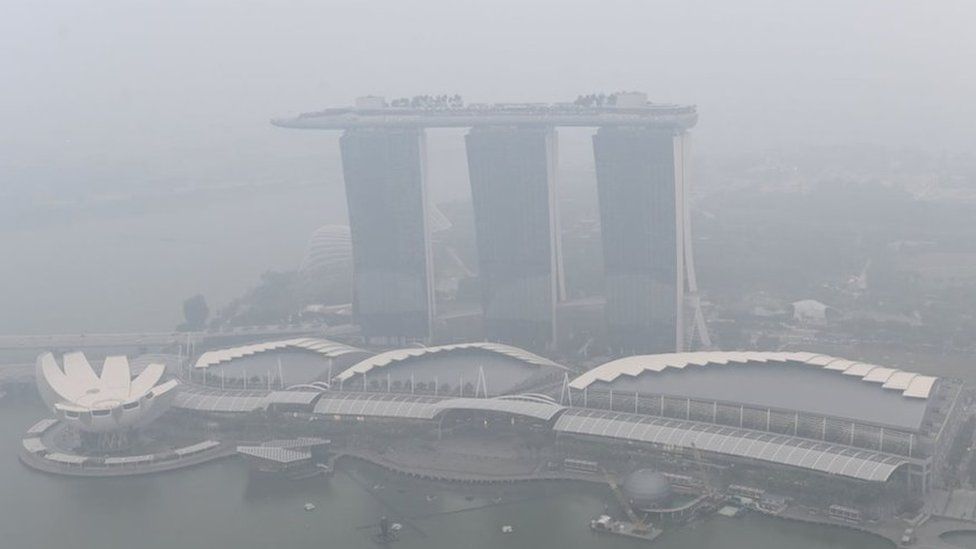
Outdoor air pollution is one of the biggest death-causing risk factor in Singapore. In 2019, outdoor air pollution accounted for 1,378 deaths in Singapore, only behind high blood pressure, smoking, high blood sugar, and obesity (Our World in Data, 2021). Outdoor air pollution is commonly generated by vehicular exhaust and industrial processes. Another source of outdoor air pollution unique to Singapore (and Southeast Asia), is the burning of biomass via forest fires and slash-and-burn agricultural practices. While Singapore itself does not usually burn biomass, its neighboring countries Indonesia and Malaysia do. Therefore, the haze situation in Singapore is highly dependent on prevailing winds and weather conditions (The Straits Times, 2019), such as the monsoon season and the El Niño–Southern Oscillation (ENSO) (Hansen et al., 2019).

The issue of haze pollution in Singapore has been around for at least 5 decades. The first sighting of hazy/”foggy” conditions in Singapore was in October 1972. At that time, calls from residents were streaming in to report feelings of suffocation and demanding a reason for this unknown phenomena.
In more recent instances of the haze, Singapore has been praised for its handling of the situation, specifically regarding how risk information was conveyed to locals. Its one-stop haze portal (haze.gov.sg) provides useful information, including the 24-hr PSI reading and the corresponding recommended follow-up actions.
What is PSI?

According to the National Environmental Agency (NEA), PSI, or Pollutant Standards Index, is basically Singapore’s own version of the World Air Quality Index (AQI). It is determined by six pollutant parameters: particulate matter (PM10), fine particulate matter (PM2.5), sulphur dioxide (SO2), nitrogen dioxide (NO2), ozone (O3), and carbon monoxide (CO). PSI is a unitless number which easily conveys the current air quality to the public in a simplified manner.

Among the 6 pollutants, only one is used for the final PSI reading. This pollutant is deemed the primary pollutant. The primary pollutant is the pollutant with a sub-index value of the highest AQI equivalent. Sub-index value is calculated by dividing the current concentration of the pollutant by the highest number of the category it falls in. For example, 300 µg/m^3 of sulfur dioxide falls under the moderate category. Hence, its sub-index value would be 300/365 = 0.82.
But, How Reliable is the PSI Really?
Haze returned to Singapore in September 2019, to the extent that the poor visibility led to flight cancellations. During this time, many Singaporeans pointed out that while the PSI classified air quality in Singapore as ‘moderate’, other AQIs classified the same air conditions as ‘unhealthy’ (The Straits Times, 2019). This has led some to speculate that the NEA was downplaying the severity of the haze, and question whether the NEA’s recommendations were truly reliable overall.
For instance, research has shown that while regular healthy individuals do not have adverse effects to NO2 concentrations below about 4000µg/m^3 (existing beyond the ‘hazardous’ range in the PSI sub-indices table), asthmatics can react negatively starting from concentrations as low as 500µg/m^3 (which is deemed negligible in the PSI sub-indices table. This thus exposes a certain degree of inconsistency in the NEA’s generic classification of what is deemed ‘unhealthy’.
Therefore, while the PSI air quality classification is helpful in streamlining measures to counter the haze, a closer examination of what goes into the classification process is needed to safeguard the interests of those who have different/’abnormal’ healthcare needs.